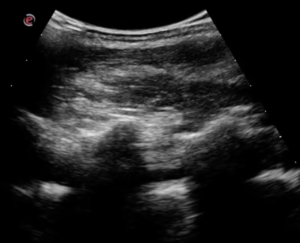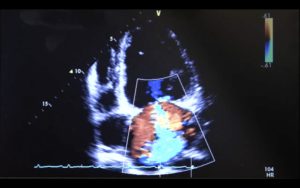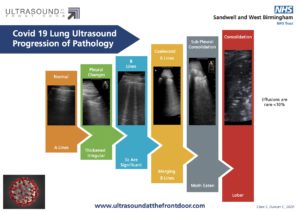Back to accreditation.
Update, 2020 – FICE has now been merged with CUSIC creating…FUSIC. Minimal change to process for accreditation and FICE is now just incorporated as module into overall ultrasound programme.
Focused Intensive Care Echocardiography (FICE) is a novel training pathway developed by the Intensive Care Society (ICS) in an attempt to formalise point of care ultrasound training within the Intensive Care Unit. It has gained in popularity with an increasing push to incorporate it into the requirements for higher level Intensive Care training. Its potential has also been identified by the Society of Acute Medicine with many Acute Medicine trainees undertaking accreditation. This guide will briefly look at the requirements to complete this training alongside some top tips for finishing.
Parasternal Long Axis View
Curriculum: FICE requires acquisition of four basic echocardiography views:
- Parasternal Long Axis View (PLAX)
- Parasternal Short Axis View (PSAX)
- Apical Four Chamber View (A4C)
- Subcostal View (SC)
In addition to these, they suggest several further images to further assess patient:
- Inferior Vena Cava (IVC)
- Lung Bases.
Parasternal Short Axis View at level of papillary muscles
The curriculum specifies certain questions to be answered. These answers may be yes/no/unsure.
- Is the LV function significantly (ie: moderately / severely) impaired?
- Is the LV dilated?
- Is the RV dilated or severely impaired?
- Is there pericardial fluid?
- Is there evidence of hypovolaemia?
- Is there pleural fluid?
- Other comments can be made, and conclusion of study should be related to clinical significance of findings.
It is important to solidify these questions in your mind. Attempting to answer more than this is where you may find yourself getting into trouble.
Apical Four Chamber View
Process: As with the other training pathways, FICE follows a familiar structure:
- ICE-BLU e-learning.
- Introductory course.
- Identifying a mentor.
- 10 supervised scans.
- Total logbook of 50 scans.
- Triggered assessments.
- Final sign off.
This process needs to be completed within a 12 month period. A mentor is able to guide you through training. The supervisor tends to have BSE accreditation and is able to sign off triggered assessments. The time limitations provide some difficulties for trainees.In reality this should be attainable in a 6-12 month period provided you aim to do 1-2 scans/week.
Subcostal View
Triggered Assessments: You must demonstrate competence in acquisition & interpretation of basic images prior to completing the final sign off.It is worth noting that completion of 50 scans does not mean you are competent at echocardiography. It gives you the accreditation to comment on the specific questions in FICE and an introductory into the level of complexity echocardiography can reach.
Logbook: Maintaining a logbook can be frustrating. Ensure you save your images when you perform your scans, anonymise them and keep a record. It is far more frustrating to log your scans in retrospect. Keep up with it and it will make the process significantly easier.
IVC View
Summary: FICE is a great introductory into echo and can prove to be invaluable at 3am on AMU/ITU with a truly sick patient. Keep on top of the logbook, save your scans and do a few scans a week. Most of all – understand the limitations.





I need to do this Ultrasound echo course as it will help me with my work in A & E to help treat my patients.